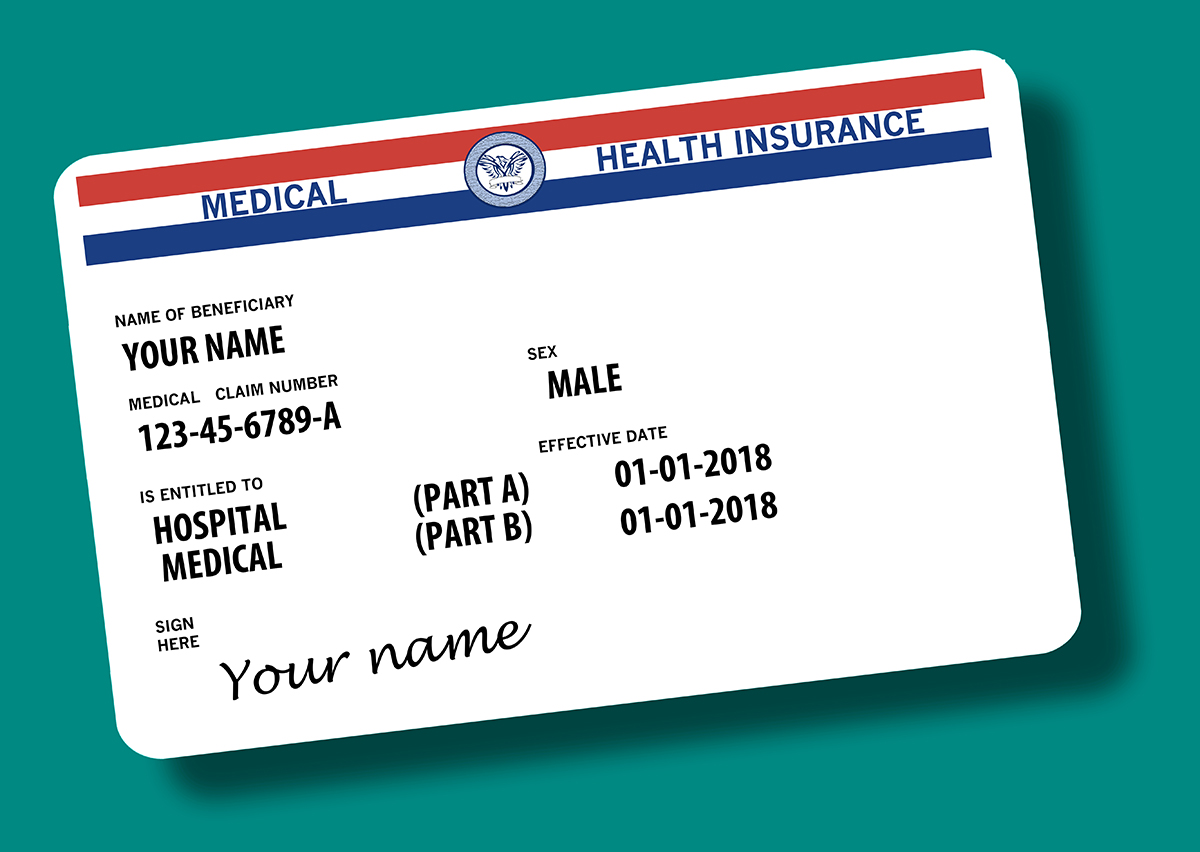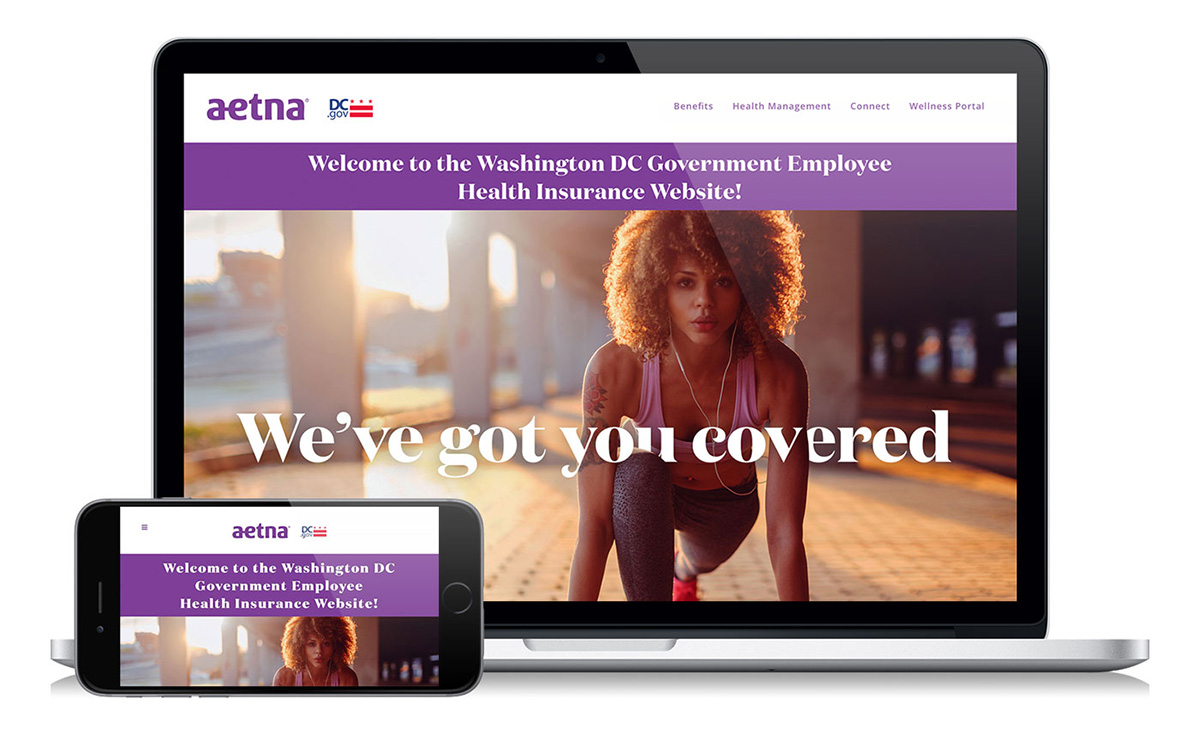

Finance
How To Sell Health Insurance
Published: October 29, 2023
Learn how to sell health insurance and boost your finance with our comprehensive guide. Start selling and earning today!
(Many of the links in this article redirect to a specific reviewed product. Your purchase of these products through affiliate links helps to generate commission for LiveWell, at no extra cost. Learn more)
Table of Contents
Introduction
Welcome to the world of health insurance sales! As a sales professional in the finance industry, selling health insurance can be a rewarding and lucrative venture. In this article, we will explore the various aspects of selling health insurance and provide you with valuable tips and strategies to help you succeed in this competitive market.
Health insurance is an essential product that provides financial protection and peace of mind to individuals and families in the event of a medical emergency or the need for ongoing healthcare. With rising healthcare costs and the ever-increasing importance of health coverage, the demand for health insurance is at an all-time high.
Understanding the fundamentals of health insurance is crucial for your success as a salesperson. You need to familiarize yourself with terms such as premiums, deductibles, co-pays, and out-of-pocket maximums. Having a clear understanding of these concepts will enable you to explain the benefits of health insurance to potential customers and address any questions or concerns they may have.
Identifying your target market is the next step in selling health insurance. Determine whether you will focus on individual health insurance plans or group plans for businesses. Research the demographics and needs of your target market to tailor your approach and marketing strategies accordingly. By understanding the unique challenges and pain points of your target market, you can position yourself as a trusted advisor and offer customized solutions that meet their specific needs.
Building your knowledge and skills is an ongoing process in the field of health insurance sales. Stay updated on the latest industry trends, policy changes, and new products. Attend seminars, workshops, and webinars to expand your knowledge and learn from industry experts. Acquiring certifications such as the Health Insurance Associate (HIA) or Certified Health Insurance Specialist (CHIS) will demonstrate your expertise and give you a competitive edge.
Prospecting is a critical step in finding potential customers for health insurance. Utilize various prospecting methods such as cold calling, networking events, referrals, and online lead generation. Develop a strong pitch that highlights the benefits and importance of health insurance to capture the attention of potential clients.
Presenting and explaining health insurance options is where your knowledge and communication skills come into play. Take the time to understand your client’s needs and preferences, and offer them comprehensive insurance packages that align with their requirements. Clearly explain the coverage, benefits, and costs involved, ensuring that your client is well-informed and comfortable with their decision. Use visual aids, such as charts or comparisons, to help simplify complex information and make it easier for your clients to understand.
Understanding Health Insurance
Health insurance is a contract between an individual or group and an insurance company. It provides financial coverage for medical expenses incurred by the insured party. By paying regular premiums, individuals or groups are entitled to certain benefits and reimbursements for eligible healthcare services.
There are several key components of health insurance that are important to understand.
Premium: This is the amount of money that policyholders pay on a regular basis, typically monthly, to maintain their health insurance coverage. The premium amount varies depending on factors such as age, location, coverage type, and level of risk.
Deductible: This is the amount of money that policyholders must pay out of pocket before their health insurance coverage kicks in. For example, if the deductible is $1,000, the policyholder is responsible for paying the first $1,000 of their medical expenses before insurance coverage begins to pay.
Co-payment (Co-pay): This is a fixed amount that policyholders are required to pay at the time of receiving healthcare services, such as doctor visits or prescription medications. Co-pays can vary depending on the type of service and are typically lower than the total cost of the service.
Out-of-pocket maximum: This is the maximum amount of money that policyholders are responsible for paying in a given year. Once the out-of-pocket maximum is reached, the insurance company covers all eligible expenses for the remainder of the year.
Network: Health insurance plans often have a network of healthcare providers that have agreed to provide services at discounted rates to policyholders. It’s important to understand the network restrictions and choose healthcare providers that are within the network to maximize coverage and minimize out-of-pocket expenses.
Types of health insurance plans: There are various types of health insurance plans available, including HMO (Health Maintenance Organization), PPO (Preferred Provider Organization), POS (Point of Service), and EPO (Exclusive Provider Organization). Each type of plan has its own network and coverage rules, so it’s important to choose the one that best suits your needs and budget.
Having a solid understanding of these concepts and the different types of health insurance plans will enable you to effectively explain the benefits and features to potential clients. It will also help you guide individuals or groups in selecting the most appropriate coverage for their specific needs.
Identifying Your Target Market
When selling health insurance, identifying your target market is crucial for effectively reaching and connecting with potential customers. Understanding the demographics, needs, and preferences of your target market will allow you to tailor your marketing and sales strategies to maximize your success.
Here are some key steps to help you identify your target market:
- Conduct Market Research: Start by conducting thorough market research to gather information about the different segments of the health insurance market. Identify trends, demographics, and the specific needs and pain points of potential customers. This research will help you determine which segments you can serve best and which might have the highest demand for health insurance products.
- Segmentation: Once you have gathered the necessary information, segment the market based on common characteristics and needs of potential customers. This can include factors such as age, income level, occupation, geographic location, and lifestyle. By segmenting the market, you can create targeted marketing messages and campaigns that resonate with each specific group.
- Identify Customer Profiles: Create customer profiles or buyer personas for each segment of your target market. These profiles should include detailed information about their demographics, behaviors, motivations, and pain points. Understanding your potential customers on a deeper level will help you design customized solutions and effectively address their specific needs.
- Evaluate Competition: Analyze your competitors and their target markets. Identify any gaps or unmet needs in the market that you can cater to. Differentiate yourself by offering unique value propositions that appeal to your target market. Find your niche and position yourself as an expert in serving the specific needs of your chosen segment.
- Refine and Test: As you begin marketing and selling health insurance, gather feedback from your customers and analyze the results. Continuously refine your target market based on the feedback and performance of your campaigns. This iterative process will help you align your strategies and offerings with the evolving needs of your target market.
Remember, the more specific and well-defined your target market is, the better you can tailor your approach to provide relevant solutions. By understanding the unique challenges and preferences of your target market, you can position yourself as a trusted advisor and offer health insurance products that meet their specific needs.
Building Your Knowledge and Skills
In the world of health insurance sales, building and maintaining your knowledge and skills is essential for success. Staying informed about the latest industry trends, regulations, and product offerings will enable you to provide valuable insights and solutions to your clients. Here are some strategies to help you continuously enhance your knowledge and skills:
- Stay Updated: Keep yourself up to date with the latest developments in the health insurance industry. Subscribe to industry publications, newsletters, and online forums to stay informed about policy changes, new products, and emerging trends. Regularly visit insurance company websites and attend industry conferences or webinars to gain insights from industry experts.
- Complete Relevant Certifications: Consider pursuing certifications that demonstrate your expertise in health insurance. The Health Insurance Associate (HIA) or Certified Health Insurance Specialist (CHIS) are valuable credentials that can boost your credibility and differentiate you from the competition. These certifications provide in-depth knowledge about health insurance principles, laws, regulations, and best practices.
- Attend Training Programs: Take advantage of training programs offered by insurance companies or industry associations. These programs can enhance your product knowledge and sales skills. They often provide valuable insights into effective sales techniques, objection handling, and customer relationship management.
- Network with Industry Professionals: Engage with other health insurance professionals through networking events, conferences, or online communities. By connecting with experienced individuals in the industry, you can learn from their expertise, gain valuable insights, and stay informed about industry best practices.
- Seek Mentorship or Guidance: Find a mentor or seek guidance from experienced professionals in the field of health insurance sales. Their wisdom and experience can provide valuable advice and help accelerate your learning. A mentor can guide you through challenges, offer feedback on your sales approach, and provide insights based on their own successful experiences.
- Stay Customer-Focused: Never lose sight of the fact that your success ultimately depends on your clients. Continuously strive to understand their needs, challenges, and concerns. This customer-centric approach will enable you to tailor your solutions, provide exceptional customer service, and build strong, long-term relationships based on trust and mutual respect.
Remember, building your knowledge and skills is an ongoing process. Embrace a growth mindset, continuously seek opportunities to learn and improve, and stay passionate about providing the best possible service to your clients. By becoming a trusted advisor who is well-informed and equipped with the latest industry insights, you will gain a competitive advantage in the health insurance sales market.
Prospecting for Potential Customers
In the fast-paced and competitive world of health insurance sales, effective prospecting is crucial for finding potential customers and expanding your client base. Prospecting involves identifying and reaching out to individuals or businesses who may be in need of health insurance coverage. Here are some strategies to help you prospect for potential customers:
- Cold Calling: Cold calling involves reaching out to prospects by phone without any prior contact. Develop a compelling script that highlights the benefits of health insurance and addresses common pain points. Be prepared for objections and have well-rehearsed responses to overcome them. Remember to always be polite, professional, and respectful of the prospect’s time.
- Networking Events: Attend networking events, conferences, or trade shows related to the healthcare industry. These events offer opportunities to connect with individuals or businesses who may be interested in health insurance coverage. Engage in meaningful conversations, exchange business cards, and follow up with potential leads afterwards.
- Referrals: Leverage the power of referrals by asking satisfied clients, friends, or family members to refer you to others who may be in need of health insurance coverage. Personal recommendations can be an effective way to gain trust and credibility with potential customers.
- Online Lead Generation: Utilize online lead generation strategies to attract potential customers. This can involve creating informative content on your website or blog, optimizing your online presence for search engines, and utilizing social media platforms to engage with your target audience. Offer valuable resources, such as downloadable guides or webinars, in exchange for contact information.
- Partnerships with Professionals: Build relationships with professionals in related fields, such as doctors, healthcare providers, or financial advisors. Collaborate with them to offer joint educational seminars or workshops, where you can showcase the importance of health insurance coverage and generate leads.
- Targeted Marketing Campaigns: Develop targeted marketing campaigns that specifically reach your desired audience. Utilize digital marketing strategies, such as email marketing or pay-per-click advertising, to reach individuals or businesses who are likely to be interested in health insurance coverage. Craft compelling messages that address their pain points and offer solutions.
When prospecting for potential customers, it’s important to remember that building relationships and establishing trust are key. Listen to their needs, provide transparent and honest information, and offer personalized solutions that align with their specific requirements. By demonstrating your expertise and showing genuine care for their well-being, you will position yourself as a reliable and trusted advisor in the competitive health insurance market.
Presenting and Explaining Health Insurance Options
Once you have identified potential customers and established contact, the next step is presenting and explaining health insurance options to them. This stage is critical in helping individuals or businesses understand the various coverage options available and making informed decisions. Here are some key strategies to effectively present and explain health insurance options:
- Assess Client Needs: Before presenting health insurance options, take the time to have a thorough discussion with your clients to understand their specific needs, budget, and any concerns they may have. This will help you tailor your presentation and recommendations to align with their requirements.
- Provide Clear Explanations: Health insurance can be complex, so it’s essential to break down the information into simple and understandable terms. Avoid using jargon or technical language. Clearly explain the various components of the insurance plan, such as deductibles, co-pays, networks, and coverage limits.
- Highlight Benefits and Features: Emphasize the key benefits and features of the health insurance options you are presenting. Explain how the coverage can offer financial protection against unexpected medical expenses and provide access to a network of healthcare providers. Focus on the advantages that are most relevant to your clients’ needs and preferences.
- Use Visual Aids: Utilize visual aids, such as charts, graphs, or infographics, to help illustrate and simplify complex information. Visual aids can enhance understanding and make it easier for your clients to compare different plans and make informed decisions.
- Provide Real-Life Examples: Share real-life examples or case studies of how health insurance coverage has benefited individuals or businesses in similar situations. This can help your clients visualize the value and importance of having adequate coverage.
- Address Concerns and Questions: Be prepared to address any concerns or questions your clients may have. Sometimes, potential customers may have misconceptions or a lack of understanding about health insurance. Provide clear and accurate information to alleviate their concerns and ensure they feel confident in their decision.
- Compare Options: If you are presenting multiple health insurance options, provide a clear comparison of the coverage, costs, and benefits of each plan. Highlight the differences and help your clients understand which option best suits their needs and budget.
- Personalize Recommendations: Based on your clients’ needs and preferences, offer personalized recommendations for health insurance options. Explain why you believe a particular plan is the best fit and how it addresses their specific requirements. Tailoring your recommendations will demonstrate your client-centric approach and build trust.
Remember, the goal is to empower your clients with the knowledge they need to make informed decisions about their health insurance coverage. By presenting the information in a clear, concise, and personalized manner, you can help ensure that your clients understand their options and feel confident in their choice of health insurance coverage.
Handling Objections and Overcoming Challenges
In the process of selling health insurance, you are likely to encounter objections and challenges from potential customers. Objections may arise due to concerns about cost, coverage, or perceived complexities. Overcoming these objections and challenges is essential to guide individuals or businesses towards making a confident decision to purchase health insurance coverage. Here are some effective strategies for handling objections and overcoming challenges:
- Listen and Empathize: When faced with an objection, actively listen to the concerns of your potential customer. Show empathy and understanding towards their worries or uncertainties. This will help you establish trust and open the door for a constructive conversation.
- Clarify Misunderstandings: Address any misconceptions or misunderstandings that may be leading to objections. Provide clear and accurate information to help alleviate their concerns. Use simple and relatable language to explain complex concepts, ensuring that your potential customer fully comprehends the benefits and features of the health insurance coverage.
- Highlight the Value: Emphasize the value and peace of mind that health insurance coverage provides. Paint a picture of the financial protection it offers in the event of unexpected medical expenses. Use real-life examples or stories to illustrate how having health insurance has benefited others in similar situations.
- Offer Solutions: If cost is a major concern, present options that fit within the potential customer’s budget. Discuss the flexibility of premium payment plans or suggest health insurance plans that offer lower premiums but still provide adequate coverage. Tailor your recommendations to align with their financial capabilities.
- Address Specific Objections: Each objection is unique, so address them on an individual basis. If a potential customer raises concerns about the network coverage, explain the breadth of the network and the availability of quality healthcare providers. If there are concerns about pre-existing conditions, assure them about the options available and any relevant waiting periods.
- Show Proof and Credibility: Share testimonials or success stories from satisfied clients who have benefited from their health insurance coverage. Provide statistics or industry data that support the efficacy of health insurance in providing financial protection and access to quality healthcare. This will help establish credibility and alleviate doubts.
- Offer a Trial Period: In some cases, potential customers may still be hesitant. To overcome this, offer a trial period during which they can experience the benefits of the health insurance coverage firsthand. This allows them to see the value it brings and will often address their concerns.
- Be Persistent and Follow Up: Stay in touch with potential customers even after facing objections. Continuously follow up to address their concerns, provide further information, or answer any questions that may have arisen since your initial discussion. Persistence and consistent communication can often lead to a successful resolution of objections.
Remember, objections are a natural part of the sales process. By actively listening, addressing concerns, and offering personalized solutions, you can overcome objections and guide potential customers towards making an informed decision to purchase health insurance coverage.
Closing the Sale
Closing the sale is the ultimate goal in the process of selling health insurance. After presenting and addressing objections, it is essential to take the necessary steps to confidently close the deal. Here are key strategies to effectively close the sale:
- Ask for the Sale: Never be afraid to simply ask for the sale. Clearly communicate your intention and ask the potential customer if they are ready to proceed with purchasing health insurance coverage. Sometimes, a straightforward question can break the hesitation and prompt a positive response.
- Reiterate the Value: Remind potential customers of the value and benefits they will gain by having health insurance coverage. Recap the key selling points discussed earlier and emphasize how the coverage will provide financial protection and peace of mind in uncertain times.
- Create a Sense of Urgency: Encourage potential customers to take action promptly by creating a sense of urgency. Highlight any limited-time offers, policy availability, or enrollment deadlines. This can motivate them to make a decision sooner rather than later.
- Address Remaining Concerns: If there are any lingering concerns or questions, take the time to address them thoroughly. Assure potential customers that their needs will be attended to and that you will provide ongoing support throughout the coverage period.
- Offer Incentives: Sweeten the deal by offering additional incentives or discounts as a closing tactic. This could be a reduced premium rate, extra coverage benefits, or complimentary value-added services. Providing an added incentive can make the offer more enticing and compelling.
- Provide Easy Enrollment: Streamline the enrollment process to make it quick and easy for potential customers to proceed with purchasing the health insurance coverage. Guide them through the necessary steps, assist with paperwork, and offer any necessary support to ensure a seamless experience.
- Obtain Commitment: Secure a verbal or written commitment from the potential customer. This commitment can come in the form of a signed application or a verbal agreement to proceed with the purchase. This formalizes their intent to move forward and helps solidify the sale.
- Follow Up and Provide Assurance: After closing the sale, follow up with the customer to express gratitude and provide reassurance. Assure them that they made the right decision and reinforce your commitment to providing ongoing support and exceptional customer service.
Remember, closing the sale is about guiding potential customers towards making a positive decision. By instilling confidence, addressing concerns, and offering incentives, you can effectively close the sale and ensure a satisfied customer who feels secure in their health insurance coverage.
Providing Ongoing Customer Support
Providing excellent customer support is crucial in the world of health insurance sales. Once the sale is closed and the customer has purchased health insurance coverage, it is essential to offer ongoing support to ensure their satisfaction and address any needs or concerns that may arise. Here are key strategies for providing ongoing customer support:
- Communication: Maintain regular communication with your customers to keep them informed about any updates, policy changes, or new offerings. This can be done through email newsletters, personalized phone calls, or social media updates. Keep the lines of communication open and encourage customers to reach out with any questions or concerns.
- Be Accessible: Make yourself readily available to your customers. Provide them with multiple avenues to contact you, such as phone, email, or live chat. Respond promptly to their inquiries and demonstrate that their needs are a priority.
- Assistance with Claims: Guide your customers through the claims process, offering assistance and support when needed. Educate them on how to submit claims efficiently and provide them with resources that can help them navigate any challenges they may encounter.
- Problem Resolution: Quickly and effectively address any issues or concerns that customers may have. Take ownership of problems and work towards finding a satisfactory resolution. Excellent problem-solving skills and a willingness to go the extra mile will help build trust and loyalty with your customers.
- Regular Policy Reviews: Conduct regular policy reviews with your customers to ensure that their coverage remains appropriate for their needs. Discuss any changes in their personal circumstances or healthcare requirements that may require adjustments to their coverage. Use these reviews as an opportunity to identify upselling or cross-selling opportunities.
- Knowledge Sharing: Share valuable information and resources with your customers. Keep them informed about relevant industry news, changes in regulations, or new healthcare trends. Offer educational materials or webinars to help them understand and maximize the benefits of their health insurance coverage.
- Proactive Support: Anticipate your customers’ needs and take proactive measures to address them. Offer reminders about upcoming premium payments, wellness activities, or preventive healthcare services that may be available under their coverage. By being proactive, you can demonstrate your commitment to their well-being and provide added value.
- Seek Feedback: Regularly ask for feedback from your customers to gauge their satisfaction and identify areas for improvement. Conduct surveys, request testimonials, or schedule feedback sessions to gather their insights and suggestions. Use this feedback to continuously enhance your customer support strategies.
Remember, providing ongoing customer support is not only about addressing specific issues; it is about building long-term relationships based on trust, care, and expertise. By offering continuous support, you can ensure customer satisfaction, encourage loyalty, and ultimately generate referrals and repeat business.
Conclusion
Selling health insurance requires a combination of expertise, empathy, and effective communication. By understanding the fundamentals of health insurance and identifying your target market, you can position yourself to offer tailored solutions that meet the unique needs of individuals and businesses. Building your knowledge and skills through ongoing learning and networking enables you to provide valuable insights and stay ahead in this competitive industry.
Prospecting for potential customers, presenting and explaining health insurance options, and handling objections and challenges are crucial steps in the sales process. By employing effective strategies, addressing concerns, and highlighting the value of health insurance, you can guide potential customers towards making informed decisions.
Closing the sale marks the culmination of your efforts. By asking for the sale, creating a sense of urgency, and addressing any remaining concerns, you can seal the deal and ensure a satisfied customer. However, the journey doesn’t end there. Providing ongoing customer support is vital to cultivate long-term relationships and ensure customer satisfaction. By being accessible, assisting with claims, and offering proactive support, you can establish yourself as a trusted advisor who genuinely cares about the well-being of your clients.
In conclusion, selling health insurance is more than just a transaction. It is about offering financial protection, peace of mind, and personalized solutions to individuals and businesses. By continuously enhancing your knowledge and skills, identifying the needs of your target market, and providing exceptional customer support, you can thrive in this industry and make a positive impact in the lives of your clients.














